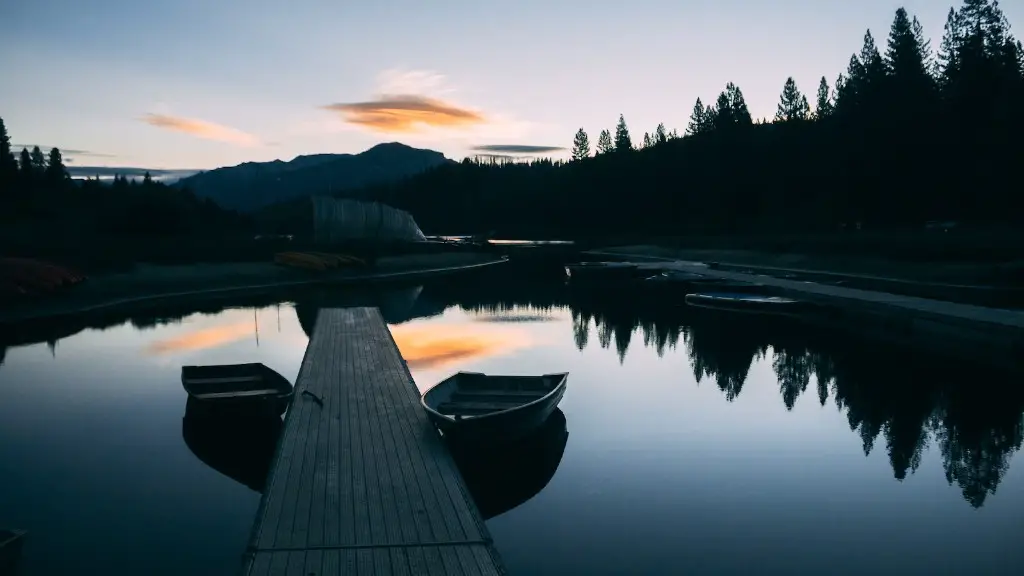Introduction
The Nile perch is an African freshwater fish that was introduced to Lake Victoria in the mid-20th century. It quickly became an invasive species, greatly changing the lake's ecosystem. This introduction brought both pros and cons to the lake and its inhabitants. On one hand, the fierce predator provided a new source of food for people, allowing them to sell it and better their lives. On the other hand, it destroyed the existing fish populations, which threatened both native species and local fishermen. In this article, we will explore why the Nile perch was introduced to Lake Victoria and look at the implications of its introduction.
Background
Lake Victoria is the largest lake in Africa, covering more than 69,000 square kilometers. It is home to more than 200 endemic fish species, including the Nile Tilapia and the Nile Perch. The Nile Perch was introduced to the lake in the early 1960s by the then-Ugandan government in an effort to boost local food production. In the 70s and 80s, commercial fishing operations began, seeking out the Nile perch, as it was good for both recreational fishing and for eating.
Reasons for the Introduction of Nile Perch
The introduction of the Nile perch was done with the intention of increasing the amount of food available to local people. It was also thought that it would provide a new source of employment in the form of commercial fishing. In addition, the Nile perch was seen as a potential predator that could help control some of the other invasive species, such as the Nile tilapia, which was overpopulating the lake and causing problems.
Effects on the Ecosystem
The introduction of the Nile perch had a tremendous impact on the Lake Victoria ecosystem. The fish lacks natural predators and is able to consume large amounts of food. This led to a sharp decline in the populations of native fish, as they were unable to compete with the voracious predator. In addition, the Nile perch also competed with local fishermen, who were unable to catch native species as they were already threatened by the Nile perch.
Effects on the Human Population
The introduction of the Nile perch had a positive effect on the humans living around Lake Victoria. The newly introduced predator provided a new source of food for the people, allowing them to catch and sell the fish and thus improve their lives. In addition, the commercial fishing industry provided much-needed employment, as people took advantage of the new opportunity.
Impact on the Environment
The introduction of the Nile perch has had both positive and negative impacts on the environment. On the one hand, its presence has helped maintain the lake's biodiversity, as it is able to consume some of the invasive species such as the Nile tilapia. On the other hand, its voracious appetite has also led to the destruction of other species and the destruction of their habitats.
Ongoing Challenges
Despite the positive effects of the Nile perch, it has caused a number of challenges for those living around Lake Victoria. The fish has little natural predators, and so it continues to threaten native species. This has led to a number of efforts by conservation groups to try to control its population and prevent it from wiping out other species. In addition, the commercial fishing industry continues to pose threats to the environment, as they are still overfishing the lake in order to meet the demands of the market.
Concerns About introducting Nile Perch
The introduction of the Nile perch has raised a number of concerns for environmentalists and conservationists. They worry about the long-term effects that it may have on the ecosystem, especially on the Lake's endemic species. They are also concerned about the effects that overfishing could have, as commercial fishermen continue to take too many of the fish out of the lake.
Future of the Nile Perch
While the introduction of the Nile perch has brought both benefits and drawbacks to Lake Victoria, its future is uncertain. It is not clear how the fish will continue to affect the lake's ecosystem or how it will impact the humans living around the lake. In addition, it is unclear what the long-term effects of overfishing or the potential implications of controlling its population will be.
International Efforts to Protect Lake Victoria
In recent years, a number of international organizations have launched initiatives to protect the Lake Victoria ecosystem. This includes the creation of protected areas around the lake, a ban on overfishing, and the introduction of regulations to control the trade of Nile Perch. These efforts have been welcomed by conservationists, but they are still too soon to determine if they will be effective in preserving the Lake Victoria's biodiversity.
Local Efforts to Conserve the Ecosystem
In addition to international efforts, local communities around Lake Victoria have taken steps to protect the lake's ecosystem. This includes the establishment of fishing cooperatives, which are designed to help the fishermen manage the fish stocks more sustainably. These co-ops are able to negotiate with the commercial fishermen and thus ensure that they don't take too many fish out of the lake. In addition, some communities have also established fish farms, where fish can be raised in a sustainable and responsible way.
Conclusion
The introduction of the Nile perch to Lake Victoria was done with the intention of providing more food for the locals, but it has caused problems for the lake's ecosystem. The fish is a voracious predator that has decimated native fish populations and caused a number of challenges for humans living around the lake. In recent years, a number of international and local initiatives have been launched to try to protect the lake's ecosystem, but it remains to be seen if these efforts will be successful.
